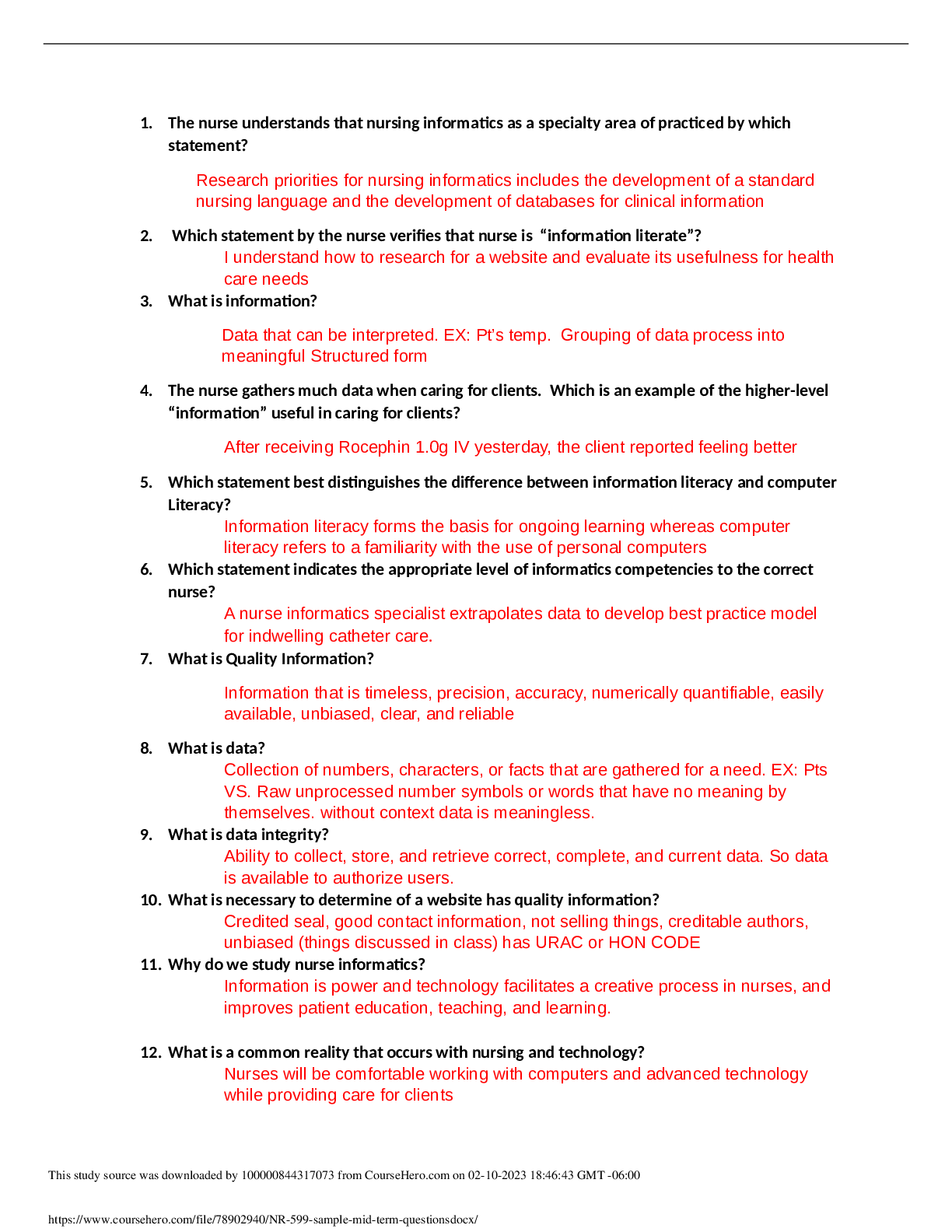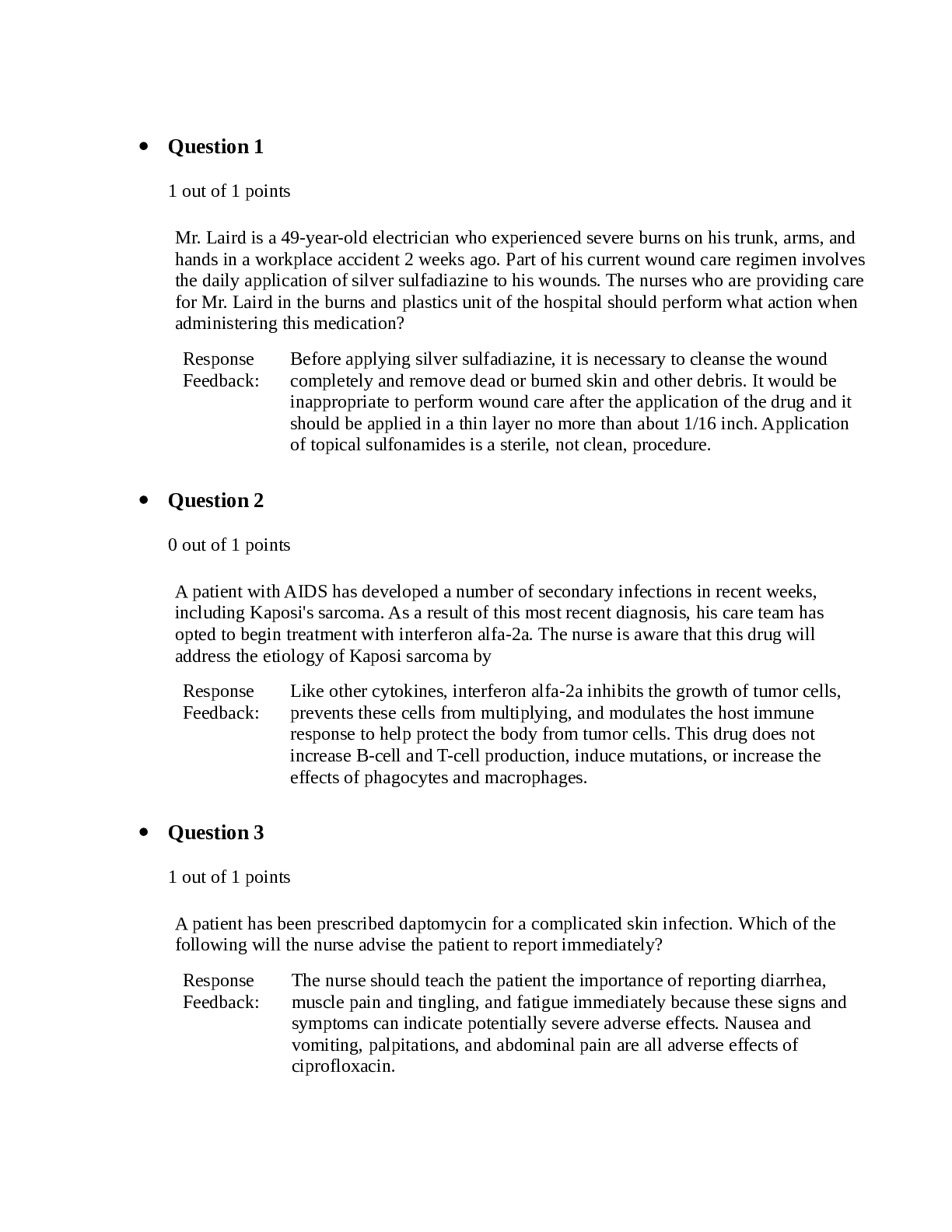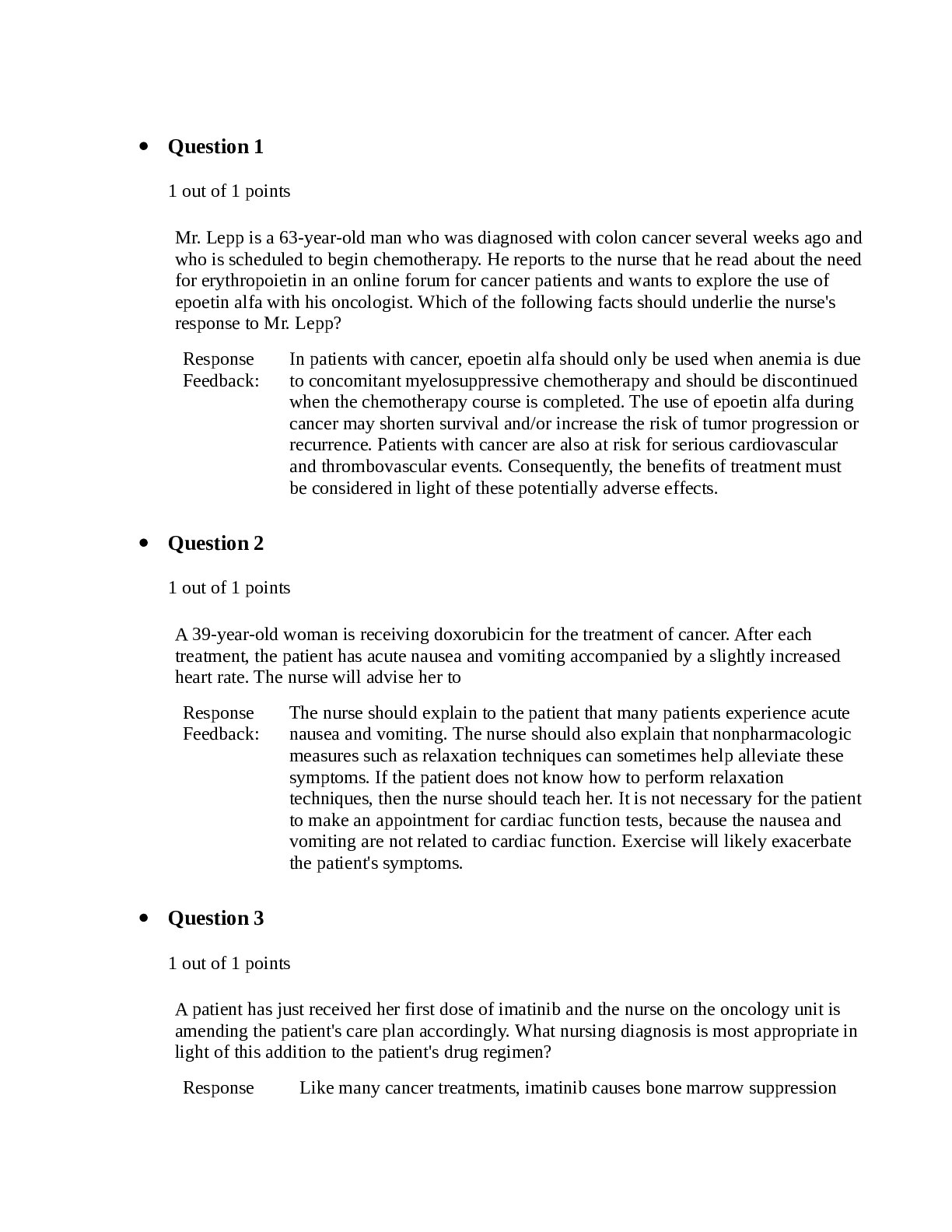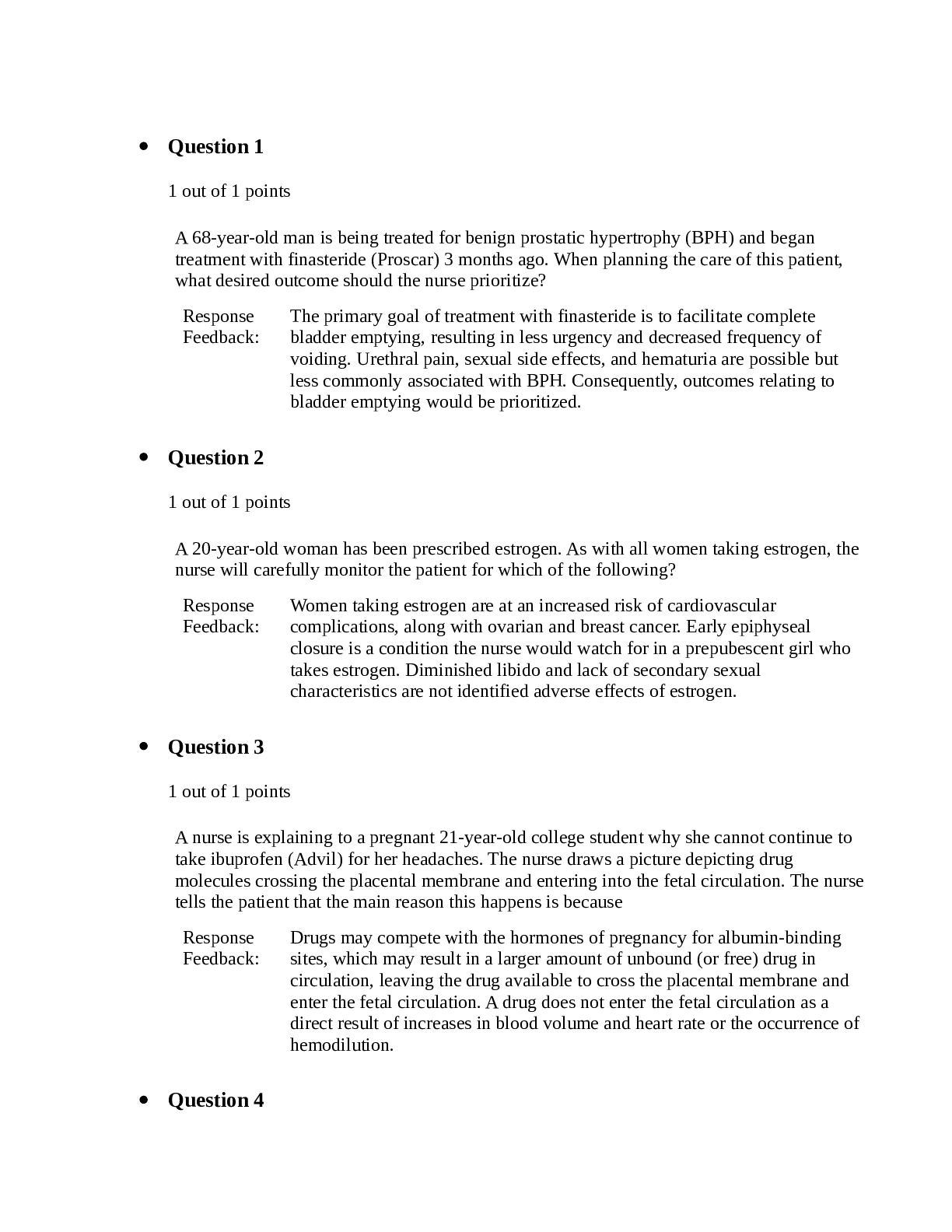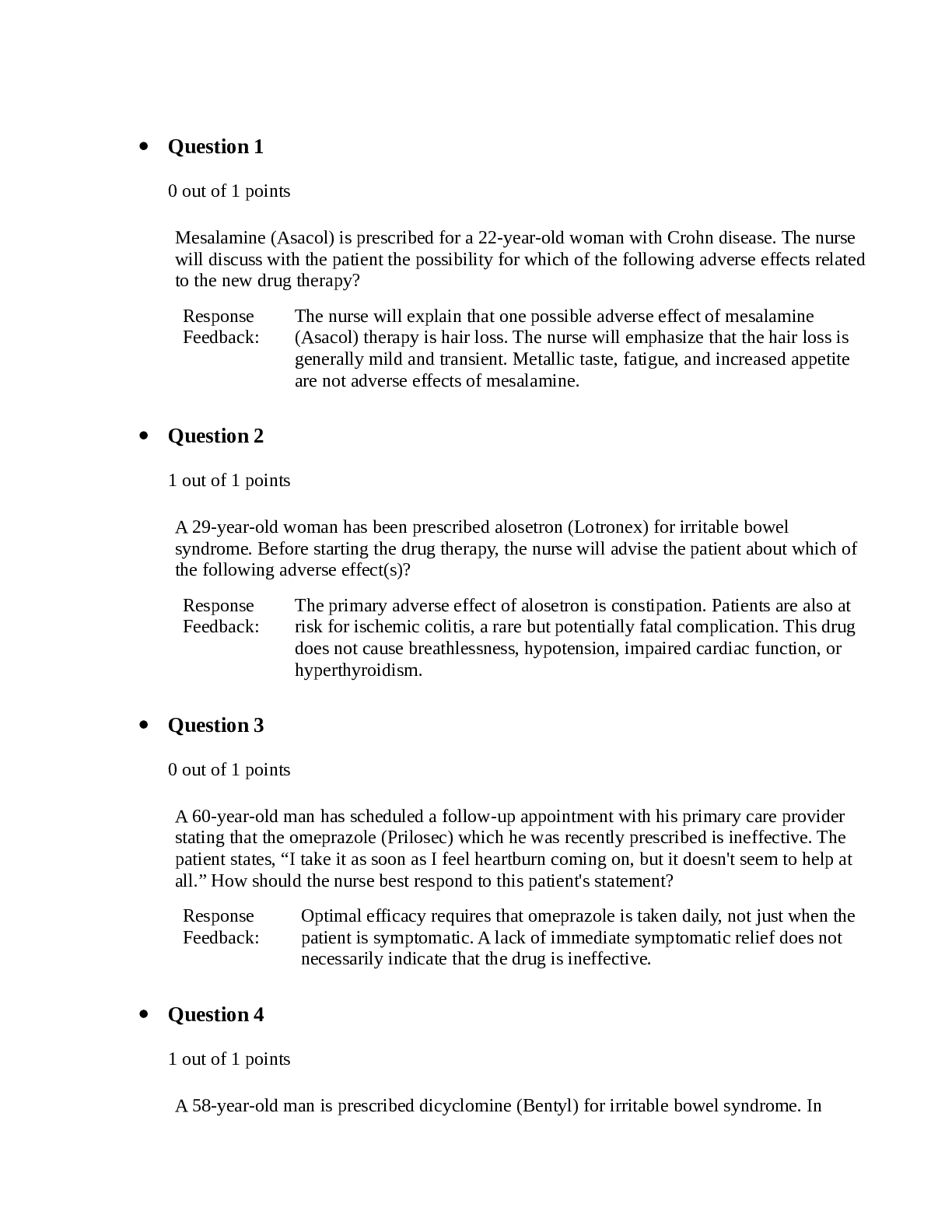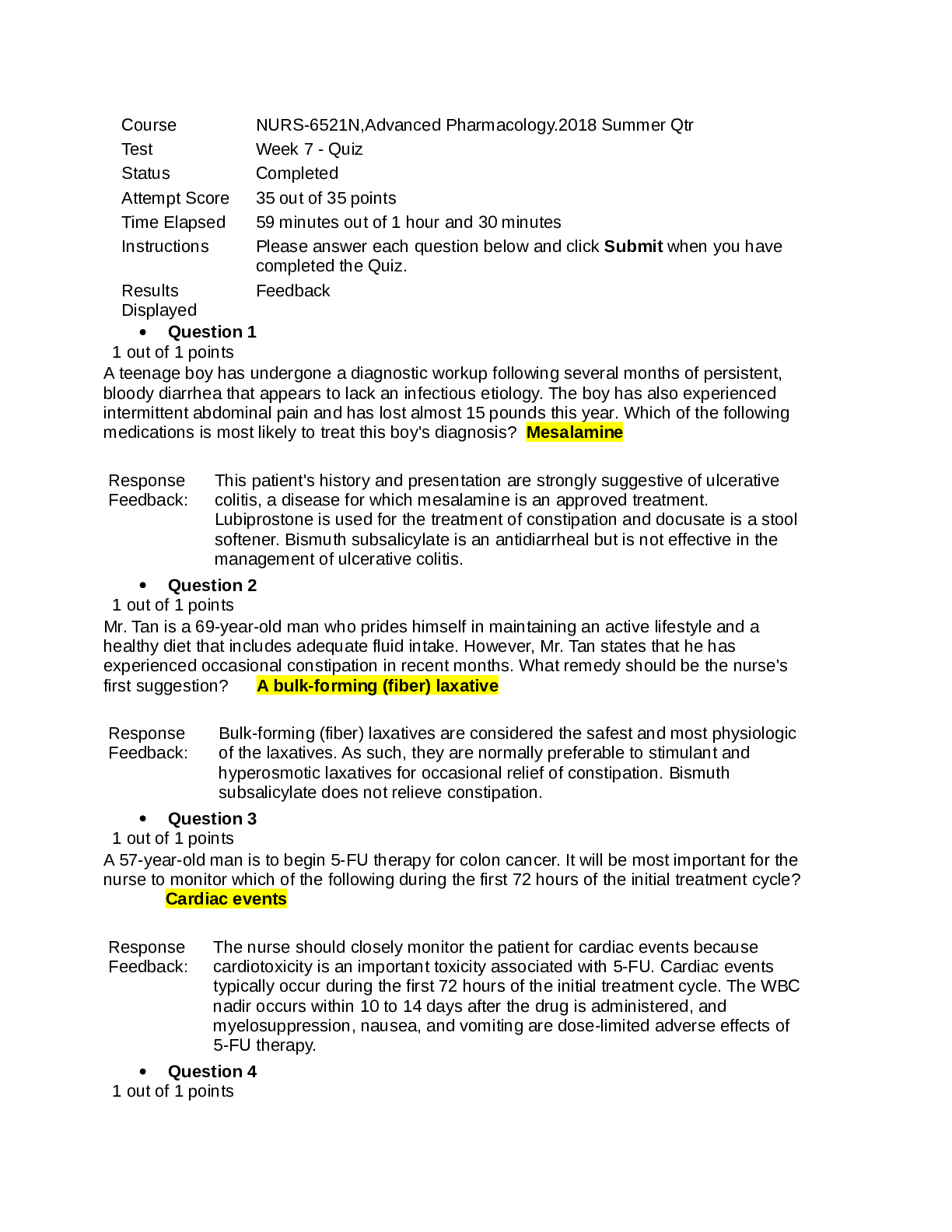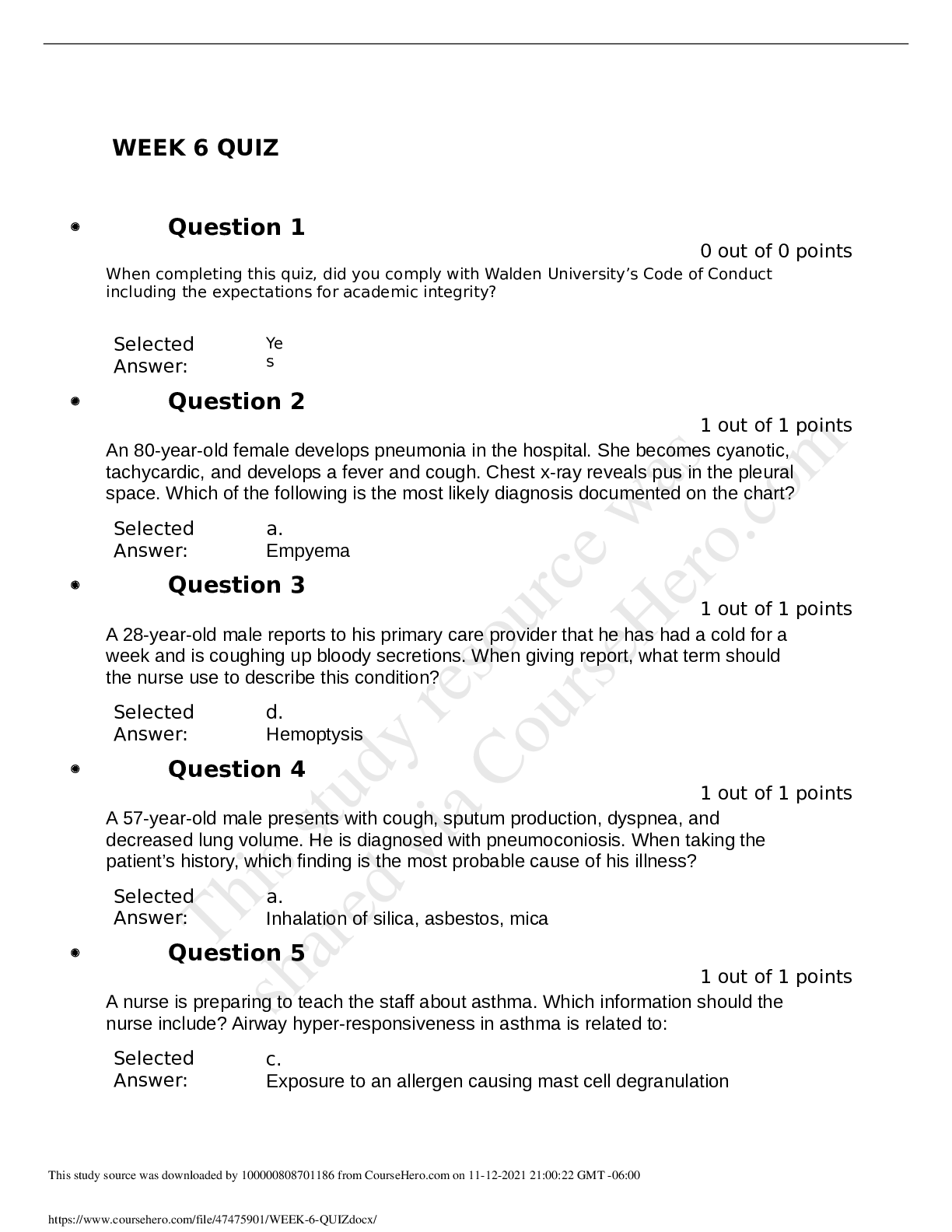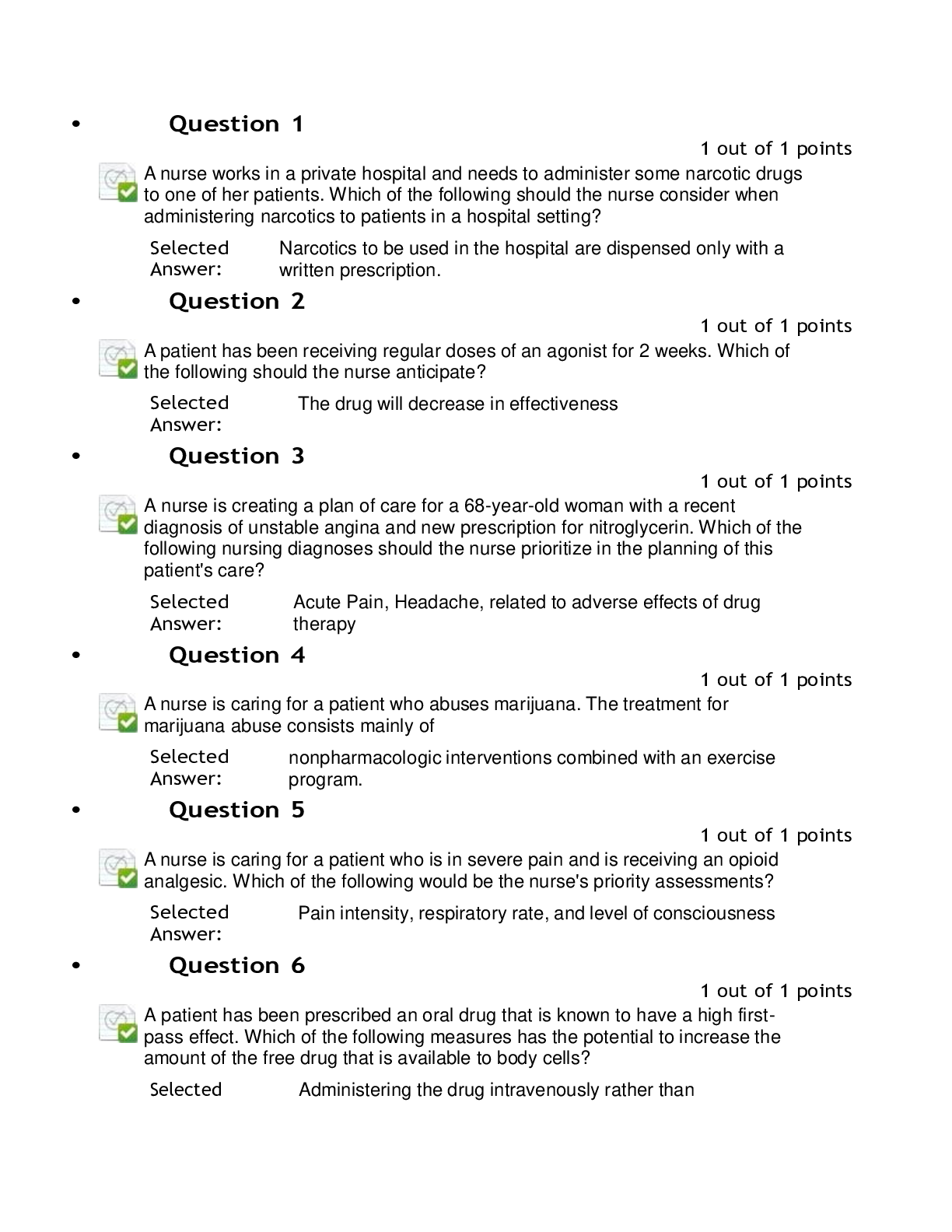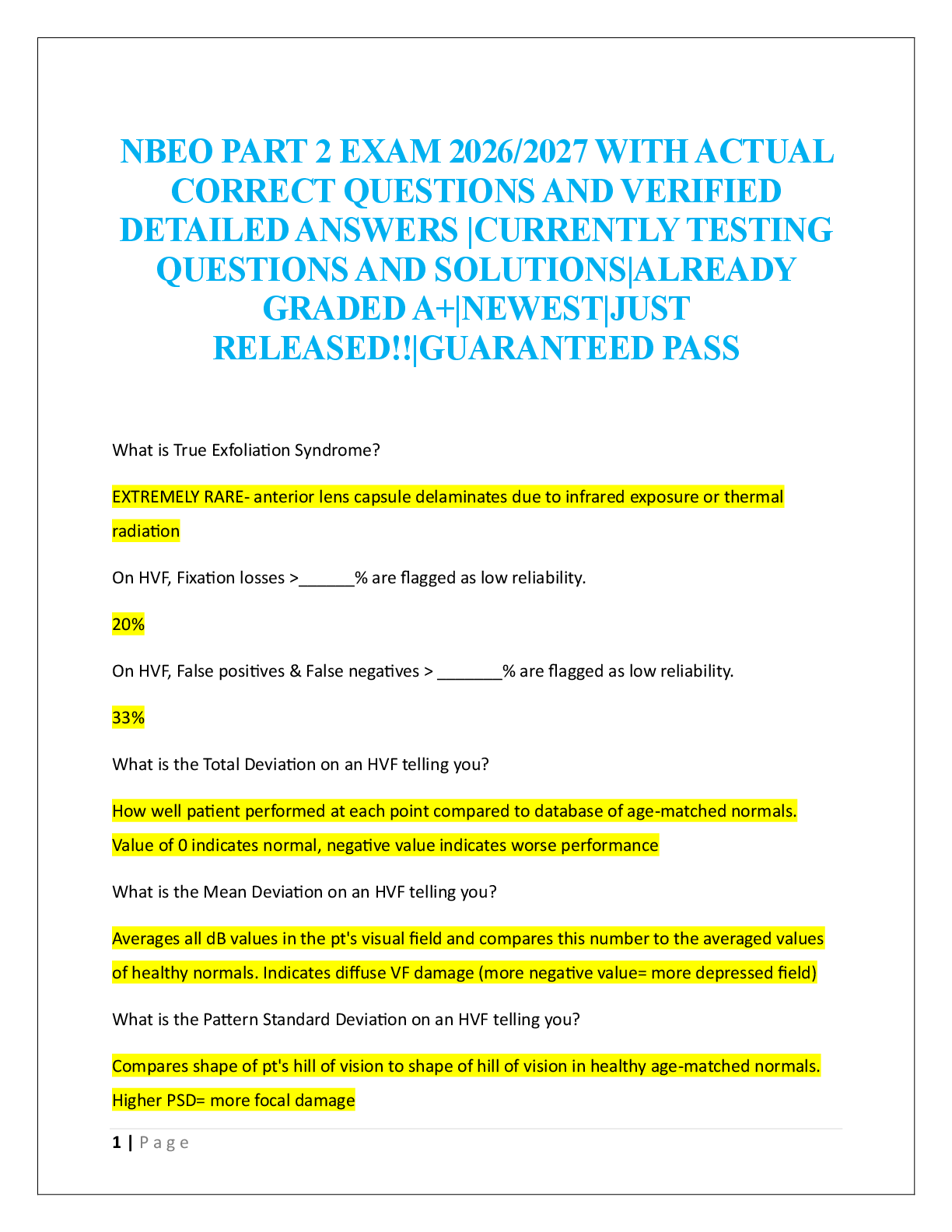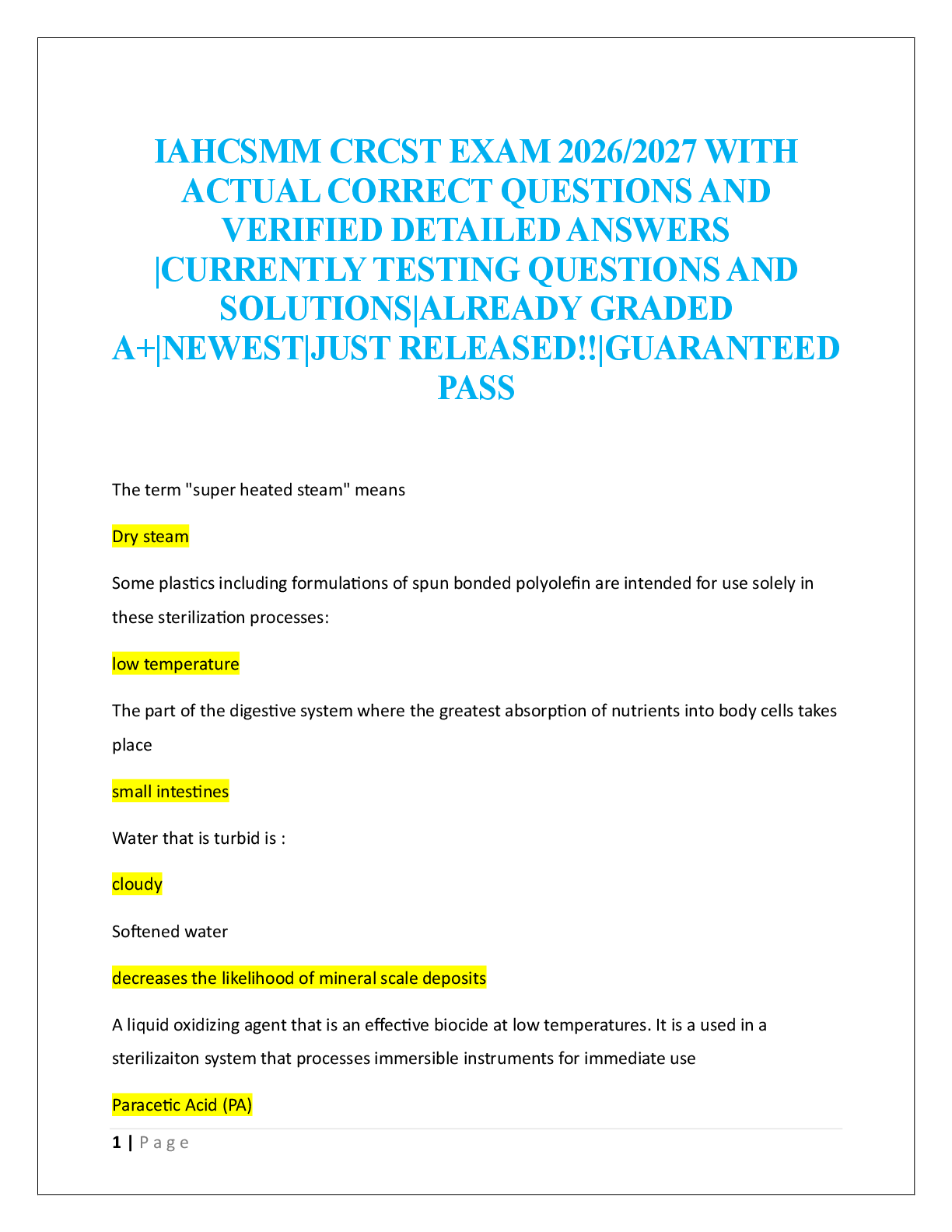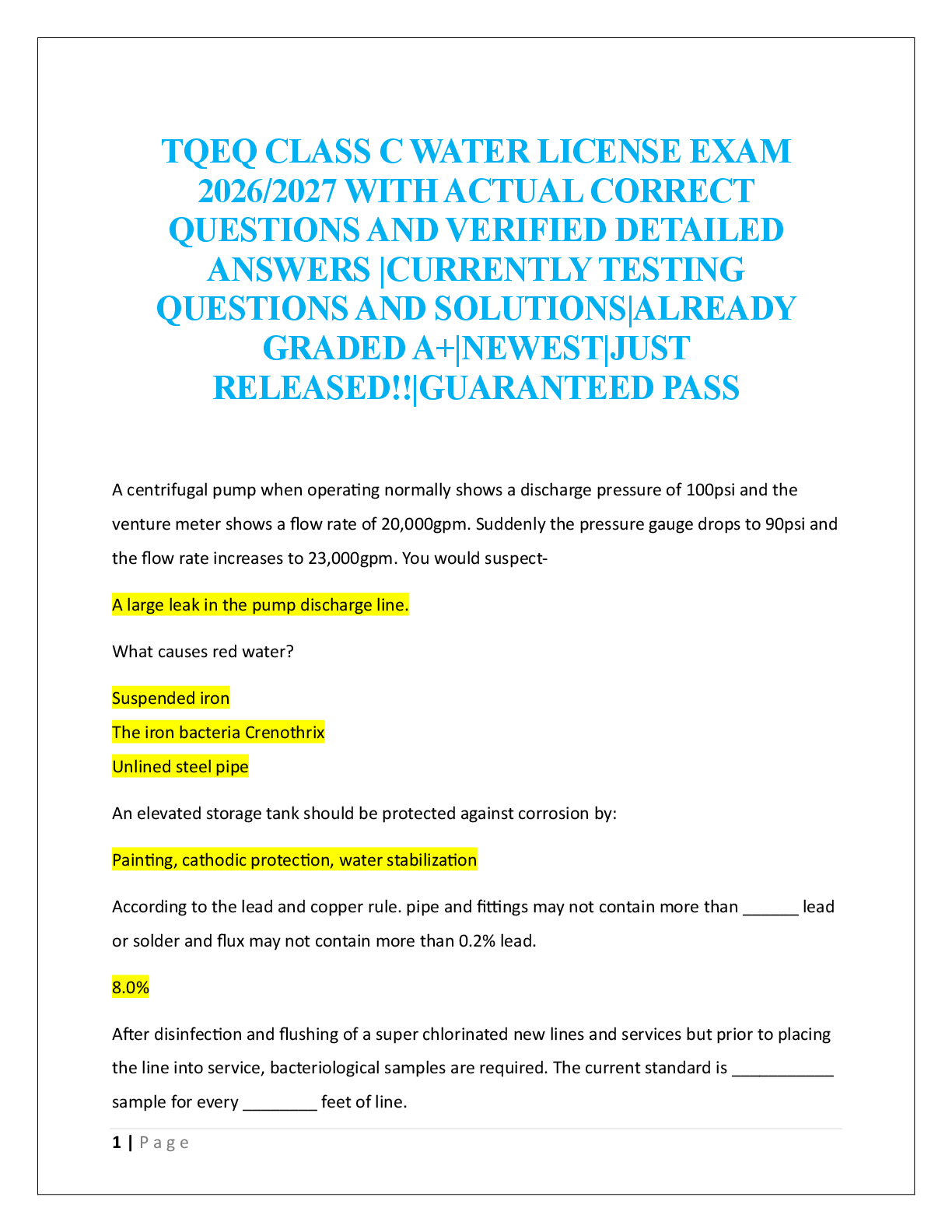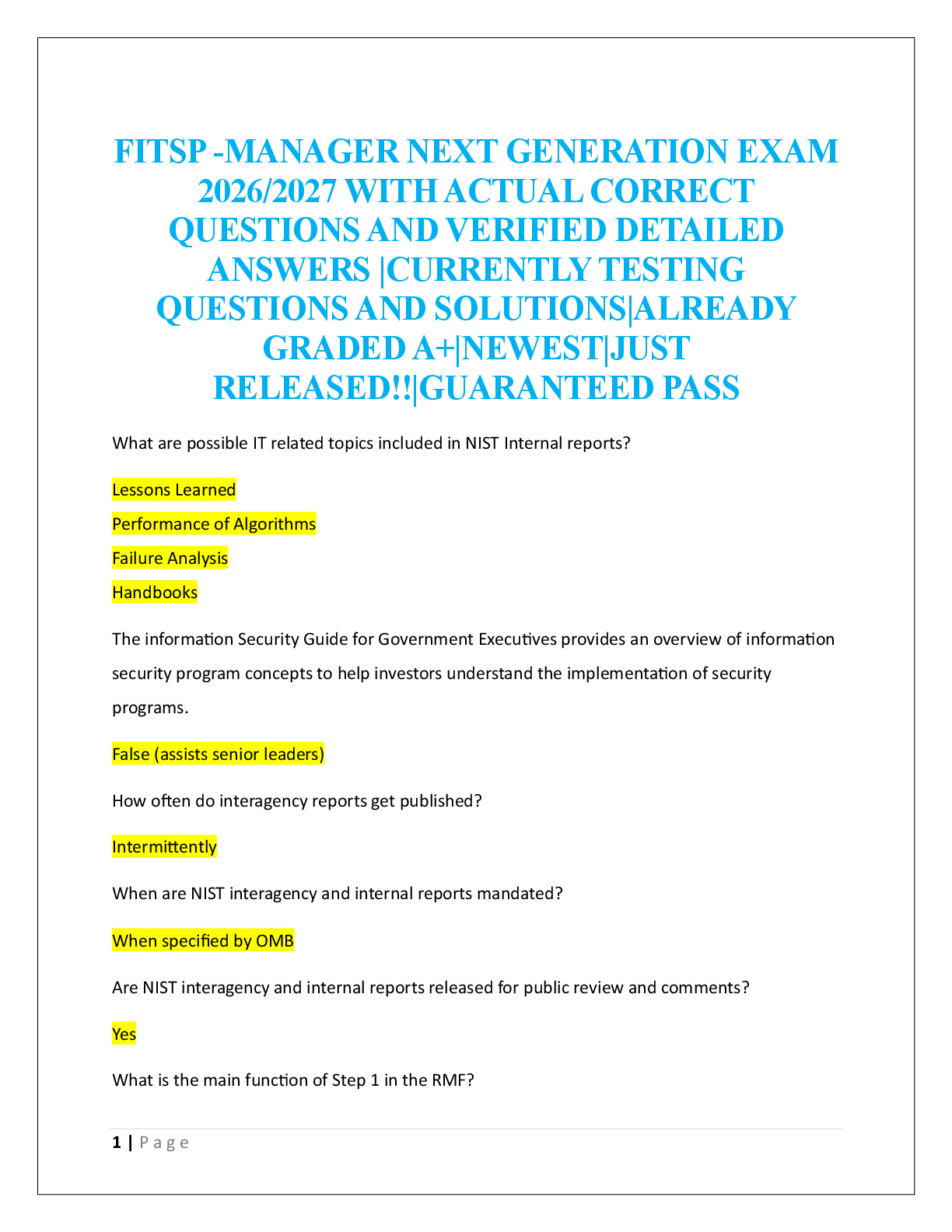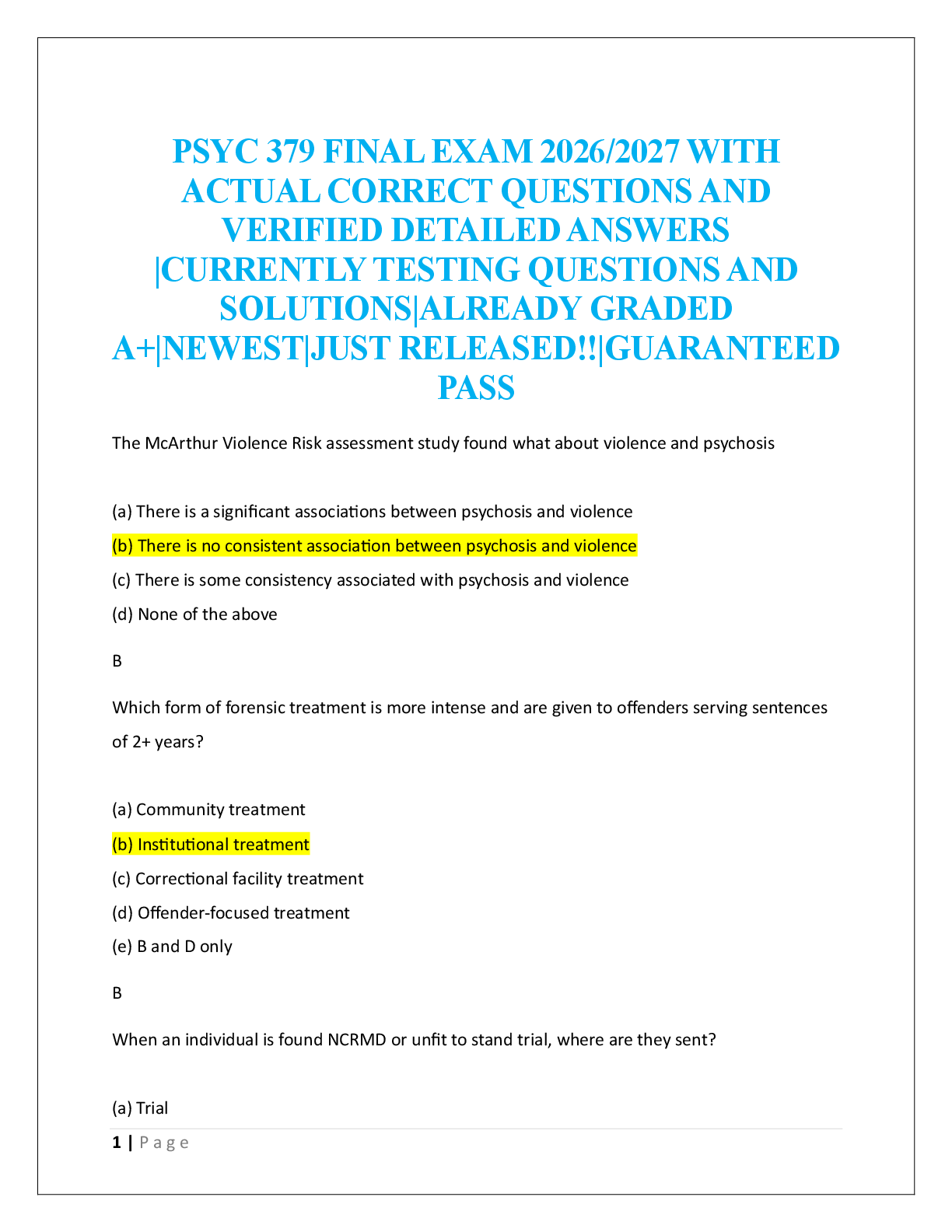Biology > EXAM > BIOD 151 Module 1 to 7 All Exams Questions and Answers Quiz Score: 100 out of 100 - 2021 (All)
BIOD 151 Module 1 to 7 All Exams Questions and Answers Quiz Score: 100 out of 100 - 2021
Document Content and Description Below
Answer the following questions. 1. Explain two reasons why a woman with low levels of LH would not be able to become pregnant. (1) LH acts on the ovary to cause ovulation to occur. (2) LH causes pr ... ogesterone release to facilitate potential fertilization of the egg and pregnancy. Progesterone is a key hormone for the maintenance of pregnancy. 2. Would you expect a male to have estrogen in their bloodstream? Explain why or why not. (1)Yes. Both male and female bodies produce “all” the sex hormones. However, the ratios are different. (2) The adrenal glands are largely responsible for producing this “opposite” hormone that the testis would not. 1. Explain two reasons why a woman with low levels of LH would not be able to become pregnant. LH, luteinizing hormone, stimulates the ovaries in females. Low levels of LH can indicate a problem with the ovaries. This can result in problems with ovulation. Low levels of LH can also indicate a problem with the pituitary gland, which is the master gland that produces LH. Label the endocrine glands (A-C) A: Pineal gland B: Hypothalamus C: Pituitary gland 1. Explain the concept of positive feedback. Give an example of a hormone that works through positive feedback. 1- Positive feedback is the action of a hormone increasing the production of that hormone. (This is the opposite of negative feedback). 2- One example is the action of oxytocin causing the uterus to contract during labor. Oxytocin enhances the effect of the uterus contractions, causing more oxytocin to be released. The positive feedback loop is stopped once the baby is born and the uterus no longer needs to contract, stopping the production of oxytocin. Positive feedback system increases the amount of the hormone that is regulated. An example of a hormone that works through positive feedback is oxytocin. This hormone is involved with childbirth by causing the uterus to contract. As the uterus is contracting, this causes more oxytocin to be released. The feedback is stopped once the baby is born and the uterus does not need to contract. This stops the release of oxytocin. Answer the following five questions: 1. This type of hormone is derived from proteins: A. Peptide hormones B. Catecholamines C. Steroid hormones D. Tyrosine A. Peptide hormones 2. Growth hormone______ A. is most active during adulthood. B. is produced by the anterior pituitary gland. C. underproduction is called acromegaly. D. A &C B. is produced by the anterior pituitary gland. 3. Neurosecretory cells are a part of what endocrine organ? A. Thalamus B. Pituitary C. Cerebellum D. Hypothalamus D. Hypothalamus 4. Which hormone production is decreased with sunlight? A. MSH –melanocyte stimulating hormone B. melatonin C. cortisol D. GH -Growth hormone B. melatonin 5. The posterior pituitary stores these two hormones: A. ADH and Prolactin B. TSH and LH C. LH and FSH D. ADH and Oxytocin D. ADH and oxytocin 1. List the hormone best describes each of the four statements below: A. I lower the level of calcium in the blood by depositing calcium into bone. Calcitonin B. I am the secreted by the pituitary and stimulate the gonads. FSH or LH (Gonadotropic hormones) C. I am secreted by the pituitary to stimulate the adrenal cortex. ACTH D. I secreted by the alpha cells of the pancreas. Glucagon Answer the following question. 1. Explain in detail how PTH and calcitonin work to maintain calcium balance. Calcitonin: produced by the thyroid glands, deposits calcium into bone. Calcitonin opposes the action of PTH. When the blood calcium level reaches the appropriate level through all these means, the parathyroid glands stop producing PTH through negative feedback. PTH: produced by the parathyroid glands increase the amount of calcium in the blood. (Any one of the following explanations of PTH is acceptable) PTH stimulates the increased absorption of calcium from the intestines. PTH retains calcium through excreting phosphate at the kidneys. In the bones, PTH promotes the activity of osteoclasts to demineralize of the bone, increasing the amount of calcium in the blood. With the influence of PTH, calcium levels in the blood increase while phosphate levels decrease. PTH is released by the parathyroid glands. Calcitonin works in opposite to PTH. Calcitonin lowers or decreases the level of calcium in the blood. Calcitonin is produced by the thyroid gland. Answer the following multiple choice questions: 1. Which hormone/s are involved in milk production? A. Thyroxin B. Oxytocin C. Prolactin D. B &C E. A&B C. Prolactin 2. Which cells mature in the thymus? A. B cells B. T cells C. Red blood cells D. the islets of Langerhans E. A & B B. T Cells 3. Iodine is needed to produce which hormone/s? A. T3/T4 B. Gonadotropic C. ACTH D. TSH E. A & D A. T3/T4 4. Which of the following is NOT a function of oxytocin? A. Uterine contraction B. Bone growth C. Milk letdown D. Given to aide in childbirth process B. Bone growth 5. Which hormones are produced in the anterior pituitary? A. TSH, MSH, and calcitonin B. ADH, GH, and prolactin C. PTH, TSH, and FH D. ACTH, GH, and prolactin D. ACTH, GH, and prolactin Answer the following question: 1. Explain in detail why the thyroid becomes enlarged during an iodine deficiency? When there is a low level of thyroxin in the blood, the anterior pituitary continues to produce TSH. The thyroid responds by increasing in size and producing a goiter, but this increase in size is ineffective because active thyroxin cannot be produced without iodine. When iodine is lacking in the diet, the thyroid enlarges in what is called a goiter. This occurs because of the relationship with the thyroid and anterior pituitary gland. When the level of Thyroxin (produced by thyroid and contains iodine) is low in the blood, the anterior pituitary gland still produces TSH. The thyroid responds by enlarging and developing a goiter. Matching each of the following conditions with the one best explanation (1-5): 1. Congenital hypothyroidism C. Low thyroxin production since birth 2. Pituitary giant A. Overproduction of GH as a child 3. Acromegaly H. Overproduction of GH as an adult 4. Tetany F. Results if PTH is not produced in response to low blood calcium 5. Anemia E. Lack of erythropoietin to act on the bone marrow A. Overproduction of GH as a child B. Underproduction of GH as a child C. Low thyroxin production since birth D. High thyroxin production since birth E. Lack of erythropoietin to act on the bone marrow F. Results if PTH is not produced in response to low blood calcium G. Results if calcitonin is not produced in response to low blood calcium H. Overproduction of GH as an adult Answer the following five questions. 1. In addition to the endocrine system, the pancreas is also part of which system? A. Excretory B. Nervous C. Circulatory D. Digestive D. Digestive 2. Which part of the adrenal glands is vital to life? A. Cortex B. Medulla C. The entire gland D. None of adrenal gland is vital to life A. Cortex 3. Which of the following is false regarding aldosterone? A. It is a regulated by the concentration of sodium. B. It causes the kidneys to excrete potassium and retain sodium. C. It causes the kidneys to retain potassium and excrete sodium. D. It is a mineralocorticoid. E. It increases blood pressure C. It causes the kidneys to retain potassium and excrete sodium. [Show More]
Last updated: 3 years ago
Preview 1 out of 69 pages

Buy this document to get the full access instantly
Instant Download Access after purchase
Buy NowInstant download
We Accept:

Also available in bundle (1)
Click Below to Access Bundle(s)

BIOD 151 Module 1 to 7 All Exams Questions and Answers Quiz Score: 100 out of 100 - 2021
BIOD 151 FINAL EXAM A&P Answer Key 2021 BIOD 151 Module 1 to 7 All Exams Questions and Answers BIOD 151 Module 4 Exam Questions and Answers BIOD 151 Module 2 Exam Questions and Answer BIOD 151 Mod...
By jakesuli 4 years ago
$40
6
Reviews( 0 )
$20.00
Can't find what you want? Try our AI powered Search
Document information
Connected school, study & course
About the document
Uploaded On
Oct 15, 2021
Number of pages
69
Written in
All
Additional information
This document has been written for:
Uploaded
Oct 15, 2021
Downloads
0
Views
137


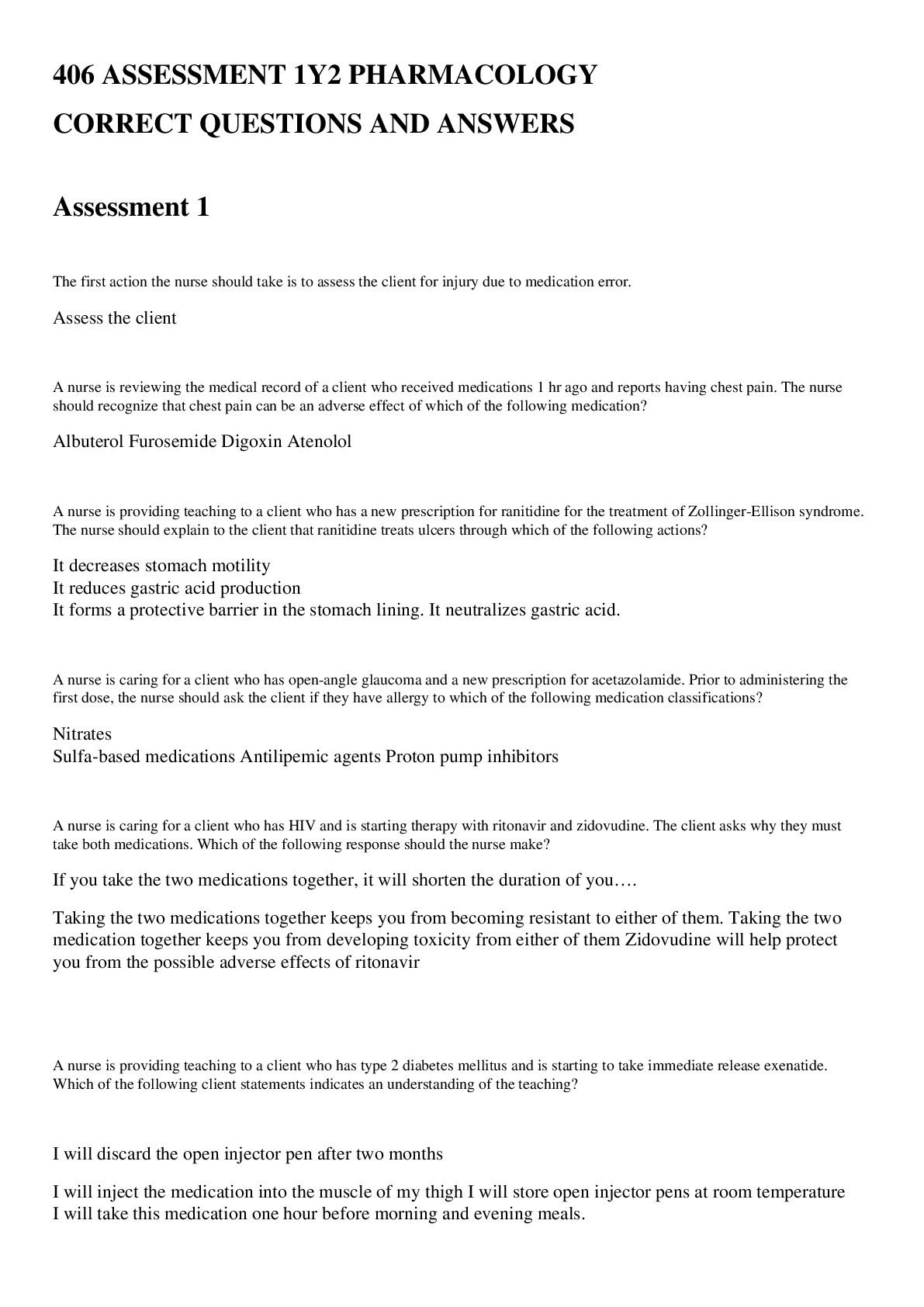
 New Update.png)

